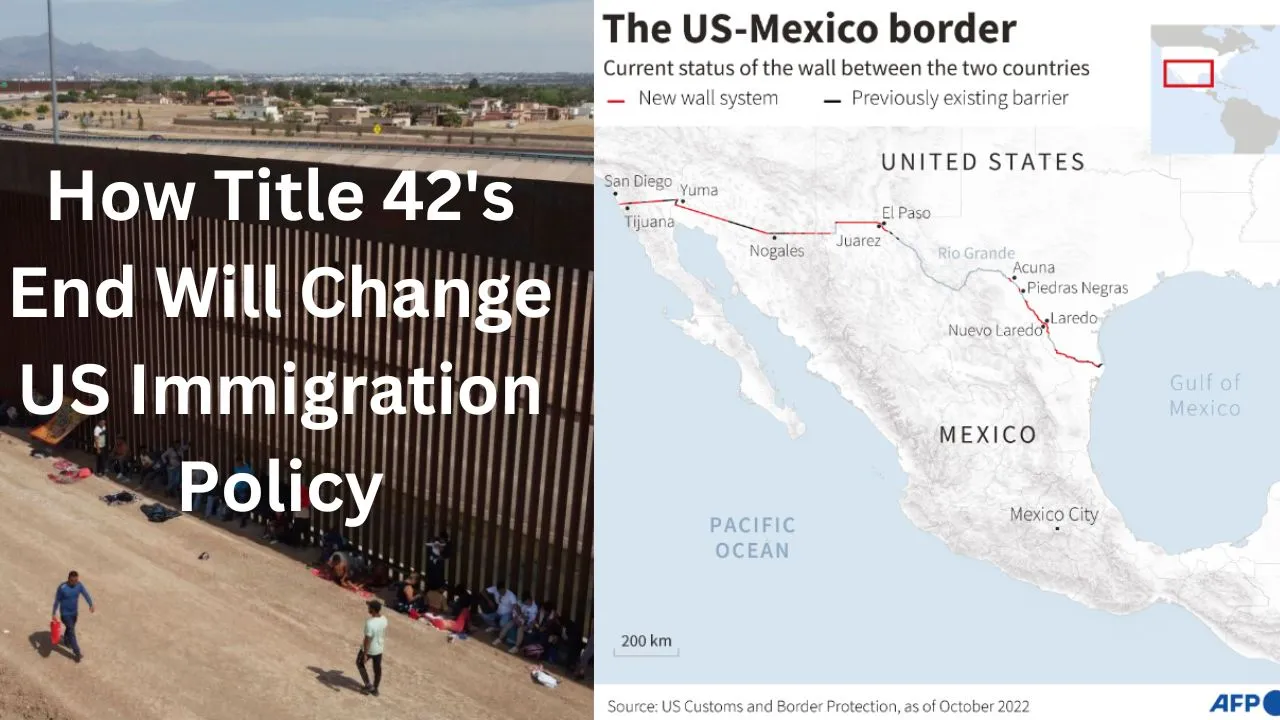A brief overview of the controversial pandemic-era measure that allowed the US to expel migrants at the border and what its expiration means for asylum seekers.
The expiration of a pandemic-era public health restriction that will significantly alter several years of US immigration policy has arrived, threatening chaos as an estimated ten of thousands migrants mass near the US-Mexico border in anticipation.
Issued during the onset of the Covid-19 pandemic, Title 42 allowed authorities to swiftly turn away migrants at the US borders, ostensibly to prevent the spread of the novel coronavirus. But that changed late Thursday when the public health emergency and Title 42 lapsed.
Here’s how border crossings could be impacted after the order’s expiration:
Table of Contents
Title 8 is back in effect
Title 42 allowed border authorities to swiftly turn away migrants encountered at the US-Mexico border, often depriving migrants of the chance to claim asylum and dramatically cutting down on border processing time. But Title 42 also carried almost no legal consequences for migrants crossing, meaning if they were pushed back, they could try to cross again multiple times.
Now that Title 42 has been lifted, the US government is returning to a decades-old section of the US code known as Title 8, which Homeland Security Secretary Alejandro Mayorkas has warned would carry “more severe” consequences for migrants found to be entering the country without a legal basis.
The Department of Homeland Security has repeatedly stressed in recent months that migrants apprehended under Title 8 authority may face a swift deportation process, known as “expedited removal” – and a ban on reentry for at least five years. Those who manage to claim asylum will face a more rigorous screening process and longer detention times.
Mexico may not cooperate
Mexico had initially only accepted the return of some nationalities under Title 42, including its own citizens and migrants from Guatemala, Honduras, and El Salvador. But in January, Mexico agreed to take more migrants expelled from the US, also helping to manage the number of people arriving at the border.
However, Mexico has signaled that it may not cooperate with the US under Title 8, citing human rights concerns and its own capacity issues. Mexico’s Foreign Minister Marcelo Ebrard said on Wednesday that Mexico would not accept any “massive expulsions” of migrants from the US.
If Mexico refuses to take back migrants expelled under Title 8, the US may have to release them into its own territory or fly them back to their home countries – a costly and logistically challenging option.
Asylum seekers may face more hurdles
While Title 42 blocked many asylum seekers from making their claims in the US, Title 8 does not automatically guarantee them access to humanitarian protection either. The Biden administration has said it will open more legal pathways for migrants from certain countries, such as Nicaragua, Cuba, and Haiti, to apply for entry from abroad.
But those who arrive at the border will still have to pass a “credible fear” interview – a screening process that determines whether they have a reasonable chance of winning asylum in court. The Trump administration had raised the bar for passing this interview, making it harder for asylum seekers to prove their cases.
The Biden administration has not reversed this change yet, and it may face pressure from Republican lawmakers and states who have sued to keep Title 42 in place. Moreover, asylum seekers who pass the interview may have to wait for months or years in detention or under monitoring programs until their cases are resolved in immigration courts that are severely backlogged.
Migrant surge may continue
The end of Title 42 may not deter migrants from seeking entry into the US, as many are fleeing violence, poverty and instability in their home countries. Some may see the change as an opportunity to pursue their asylum claims or reunite with their families in the US.
The number of migrants apprehended at the US-Mexico border reached a record high of nearly 1.7 million in fiscal year 2021, which ended in September. Many have repeatedly crossed after being expelled under Title 42 to nearby Mexican border cities.
There was an uptick in March with the anticipation of the end of Title 42 and warmer weather, according to the Washington Office on Latin America. The number of unaccompanied children and families also increased significantly, posing humanitarian and operational challenges for the US authorities.
The Biden administration has been working with Mexico and Central American countries to address the root causes of migration and enhance border security. But these efforts may take time to show results, and meanwhile, the US will have to deal with a historic influx of migrants at its southern border.
Recommended for You
- Tom Brady May Walk Away from $375 Million Broadcasting Deal with Fox.
- Kansas City Chiefs Star’s Brother Jackson Mahomes Arrested on Aggravated Sexual Battery Charges
- The Year of Patrick Mahomes: A Look Back at the Quarterback’s Incredible Achievements.
- New York Giants Offer Astonishing Contract Extension to Saquon Barkley.
- Rams select Desjuan Johnson as Mr. Irrelevant to end the 2023 NFL Draft
- Who got drafted in the NFL 2023? Complete List.






